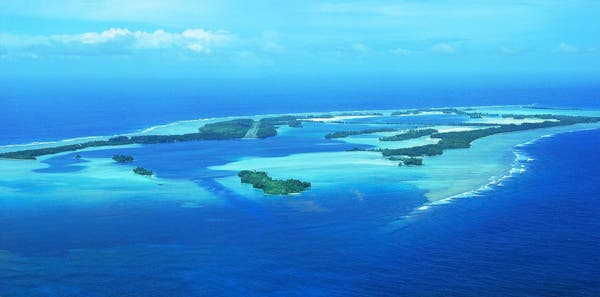There are more people in the world than at any point in history, and the advent of technology has brought with it accessible means of connecting human hubs all across the world. There are few places left on Earth that haven’t been graced by the touch of man, and for many of these it’s only a matter of time. These remote bastions of wilderness serve as natural museums, filled with a wide array of biodiversity of incommensurate value. In today’s setting, protecting these undisturbed corners of the world should be a priority for policy makers, as well locals, however this is harder than it seems at first glance. A newly published study by Stanford researchers aims to offer some practical guidelines on how this might be achieved.
Isolation desolation

Some 1,000 miles southwest of Hawaii lies Palmyra Atoll, a tiny slice of paradise covered in Technicolor corals, crystalline lagoons and lush native forest. This is where you can dive and still find yourself immersed right in the middle of hordes of reef sharks.
The location was first officially discovered in 1941, a few months before the Pearl Harbor attack, when the navy was on the outlook for strategic base locations. Luckily, the government had the decency not to build an airstrip or the likes on Palmyra Atoll, instead the sailors that landed here were absolutely charmed. Today, what was once a remote speck in Pacific Ocean seldom visited by ship traffic is now a regular stop for passenger airlines and cruise ships. Palmyra Atoll isn’t alone in its faith either, serving as a model for most remote wilderness from other parts of the globe.
Preserving the last remaining undisturbed ecosystems is the only way to avoid losing intact biodiversity reservoirs,” said study co-author Fiorenza Micheli, a biology professor affiliated with the Stanford Woods Institute for the Environment and the Hopkins Marine Station. Like preventive medicine, Micheli said, “It is a relatively small investment we can make to prepare for the highly uncertain future ahead of us.”
The dangers posed to such atolls are clear. Human intervention, either direction through fishing, pollution, deforestation and so on, or indirect through climate change that has acidified the world’s oceans and increased surface temperatures, can have dramatic effects on the local biosphere. However, while Palmyra servers a model for wilderness endangerment, it also serves as a model on how similar locations in other parts of the world can be protected.
“Beyond their instructive worth to scientists, many of us can and should take satisfaction in simply knowing that there still remain spots of our planet out there where life advances, for the moment, in ways that it has for millennia,” McCauley said. “As remoteness degrades across our planet, the value and importance of these sites to science and society will only increase.”
Recently, the atoll from the Northern Line Islands was purchased and made a National Wildlife Refuge. Still, 90 percent of remote places, a total land area six times larger than the United States, remains without formal protection, according to the study’s calculations.
“Up until now we have had the luxury of thinking very little about conserving these sites because their insulation has provided de facto protection,” McCauley said.
Remoteness not enough by itself. How to conserve isolated places
Buying whole islands is far from being a sustainable solution in the long term, while other factors like expense of monitoring and local communities’ dependence on nature make the challenge seem even more difficult. The researchers conclude that effective community planning and education is key to protecting remote areas, and also offer a set of suggestions on how this might be achieved. The authors, however, stress that these aren’t guidelines, but ideas meant to spark discussions inside communities on how biodiversity might be protected. Here are a few summarized suggestions:
- Buy and protect ecologically important areas.
- Pro: Large tracts of land are likely to be more affordable and are often uninhabited.
- Con: In populated remote areas, protecting areas may displace local residents or deprive them of resources.
- Convince stakeholders that biodiversity deserves protection for its intrinsic merits.
- Pro: The idea of safeguarding “wild nature” resonates with many people.
- Con: Indigenous people may value nature in more utilitarian ways, due to their dependence on it for life’s necessities.
- Protect ecosystems in the name of preserving tangible services such as water purification, pollination and food provision.
- Pro: Preserving services is a practical approach that could resonate more with people in remote areas who draw many of their life necessities from nature.
- Con: Many people in remote communities are unfamiliar with market-based metrics of value.
- Ecotourism
- Pro: Low-volume, high-end tourism can provide revenue for natural protection.
- Con: Poorly managed ecotourism can lead to ecosystem degradation, as well as new infrastructure and technology that erode protections and alter traditional relationships with nature.
The paper was published in the journal Biological Conservation.


